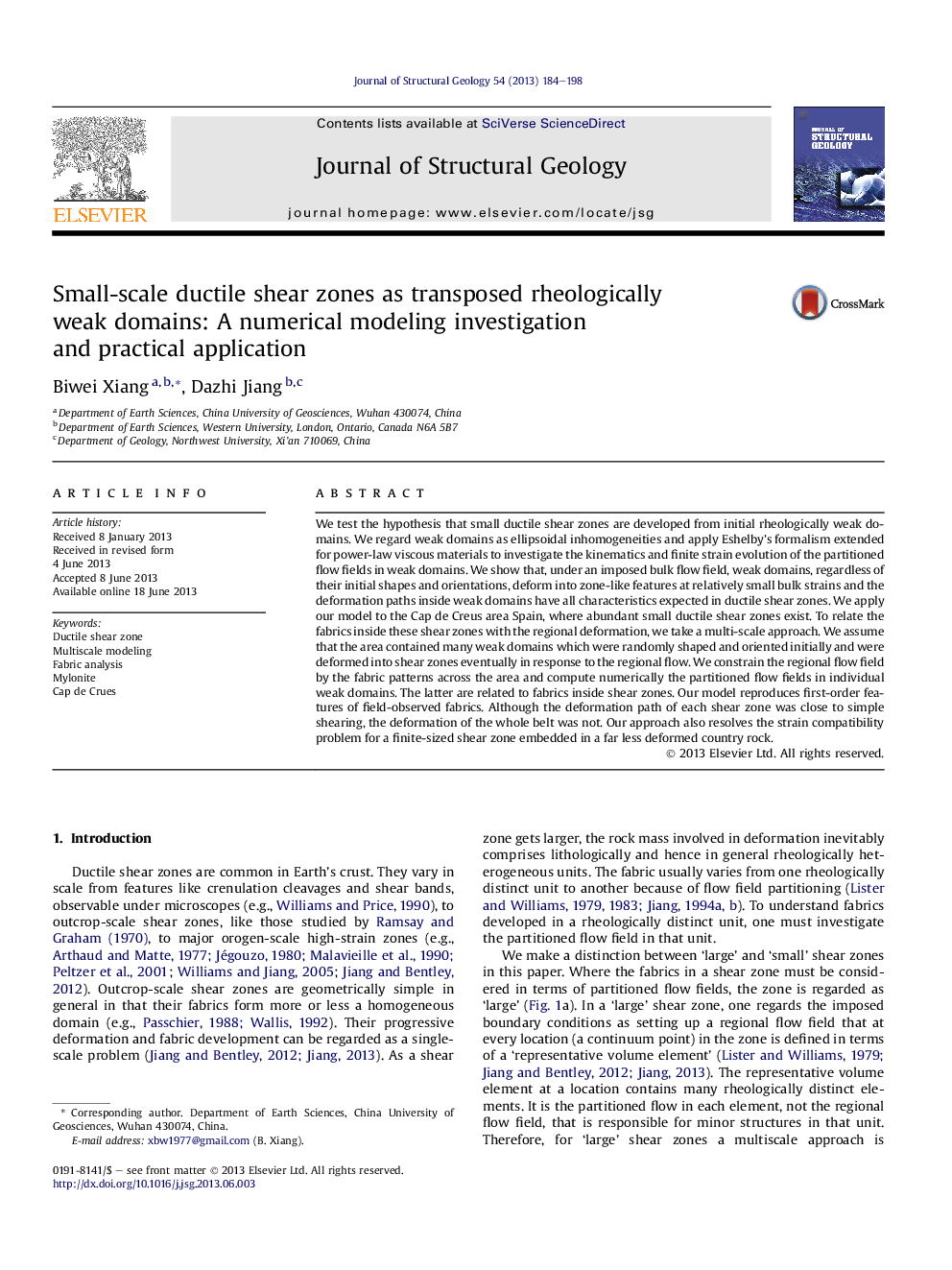| Article ID | Journal | Published Year | Pages | File Type |
|---|---|---|---|---|
| 6445077 | Journal of Structural Geology | 2013 | 15 Pages |
Abstract
We test the hypothesis that small ductile shear zones are developed from initial rheologically weak domains. We regard weak domains as ellipsoidal inhomogeneities and apply Eshelby's formalism extended for power-law viscous materials to investigate the kinematics and finite strain evolution of the partitioned flow fields in weak domains. We show that, under an imposed bulk flow field, weak domains, regardless of their initial shapes and orientations, deform into zone-like features at relatively small bulk strains and the deformation paths inside weak domains have all characteristics expected in ductile shear zones. We apply our model to the Cap de Creus area Spain, where abundant small ductile shear zones exist. To relate the fabrics inside these shear zones with the regional deformation, we take a multi-scale approach. We assume that the area contained many weak domains which were randomly shaped and oriented initially and were deformed into shear zones eventually in response to the regional flow. We constrain the regional flow field by the fabric patterns across the area and compute numerically the partitioned flow fields in individual weak domains. The latter are related to fabrics inside shear zones. Our model reproduces first-order features of field-observed fabrics. Although the deformation path of each shear zone was close to simple shearing, the deformation of the whole belt was not. Our approach also resolves the strain compatibility problem for a finite-sized shear zone embedded in a far less deformed country rock.
Related Topics
Physical Sciences and Engineering
Earth and Planetary Sciences
Geology
Authors
Biwei Xiang, Dazhi Jiang,
